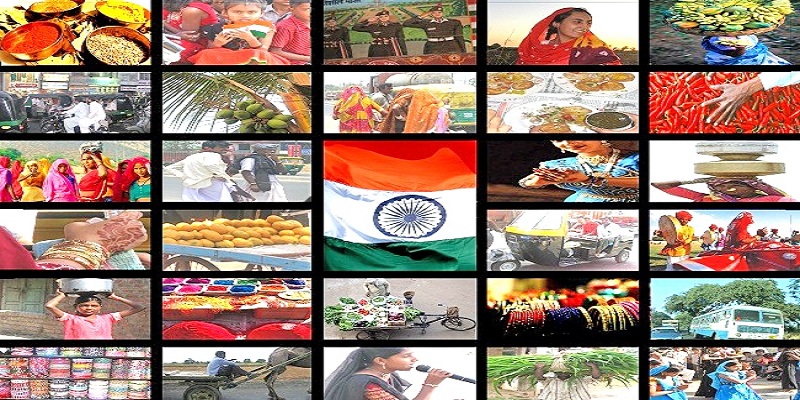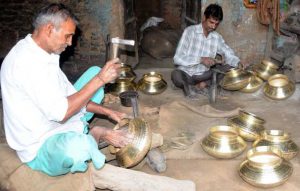UNESCO has been creating a list of intangible cultural practices from around the world and the best safeguarding practices for them since 2008. Among the 364 such practices from all over the world, there are 10 representative ones from India too.
1. Traditional brass and copper craft of utensil making among the Thatheras of Jandiala Guru, Punjab.
It constitutes the traditional brass and copper making technique of utensils in Punjab. The group of people who have kept the art alive and still practice it till date are called Thantheras, which literally means the metal copper. The craft is important, both in utility and ritual.
2. Kalbelia folk songs and dances of Rajasthan
Kalbelia is actually an untouchable community from Rajasthan who has always lived on the outskirts of villages and relied on entertaining people for their livelihood. They are also the community who are traditionally snake charmers. They consider cobras to be sacred and carry them around in cane baskets with their Poongi (musical instrument). Kalbelia are most famous for their sensuous form of dancing, also called Kalbelia, which mimics the movements of snakes in some sense and was usually performed on joyous occasions
3. Chhau dance
It is also called the Paiku nratya (battle dance). It is a tribal, martial dance form prevalent in the states of Orissa, Jharkhand and West Bengal. In fact, the name Chhau is derived from Chhauni (military camp).
4. Buddhist Chanting of Ladakh – Recitation of sacred Buddhist texts in the trans-Himalayan Ladakh region, Jammu and Kashmir.
It is believed that this chanting takes people – performers and listeners – towards enlightenment. It is an artistic expression of the followers of Buddhism. They represent the spirit, philosophy and teachings of the Buddha.
5. Sankirtana – Ritual singing, drumming and dancing of Manipur
6. Ramlila – The traditional performance of the Ramayana
This one, perhaps does not require an introduction. Ramlila is the story of Prince Ram of Ayodhya enacted in a theatrical form. It is traditionally performed in northern India during the Sharad Navratras, which is near Dussehra, for 10 or more days. In fact the one in Ramnagar last an entire month.
7. The tradition of Vedic is chanting
The traditional way of reciting the Vedas is called Vedic chanting. The Vedas are the primary source of knowledge about Hindu traditions. They comprise of the Hindu philosophy, myth, poetry and dialogue. The Vedas go back to about 3,500 years to the time of the Aryans, though they were written down much later.
8. Ramman – Religious festival and ritual theater of the Garhwal Himalayas
It is a festival celebrated in the Garhwal region, that is, parts of Uttarakhand, specifically among the Hindu community in the Saloor Dungra village of the Painkhanda Valley in Chamoli district. It is now just confined to a population of about 1800 people, belonging to about 196 families.
9. Kutiyattam – Sanskrit theatre
Native to Kerela, the Kuttiyattam is India’s oldest theater form. It is a synthesis of Sanskrit classicism and reflects the local traditions of Kerala. However, its origin and development are still shrouded in mystery. The theater form uses over seven instruments; the main one, Kuzhithalam, is played only by a member of the Nambiar caste.
10. Mudiyettu – Ritual theatre and dance drama of Kerala
It is performed for purification and rejuvenation of the community. It is the enactment of the mythological tale of a battle between the goddess Kali and the demon Darika. The ritual is a part of the Bhagwati cult. It is performed in just 4 districts of Kerela during the four day festival dedicated to Goddess Kali after the summer harvest.
You must have seen some of these Indian Tradition. Please feel free to share your experience with us.



